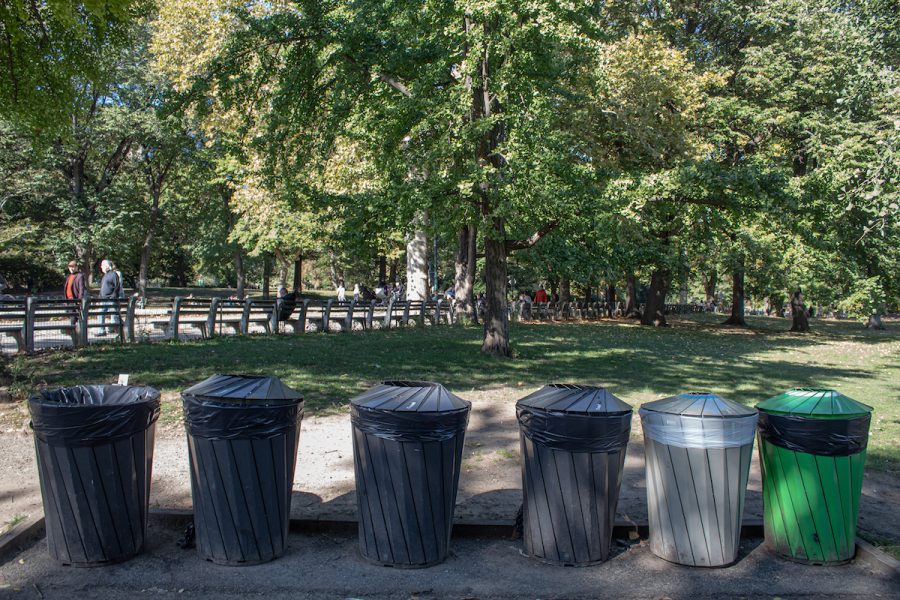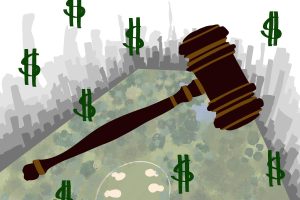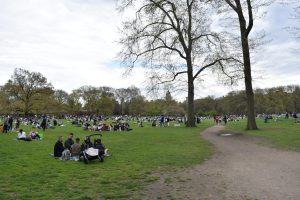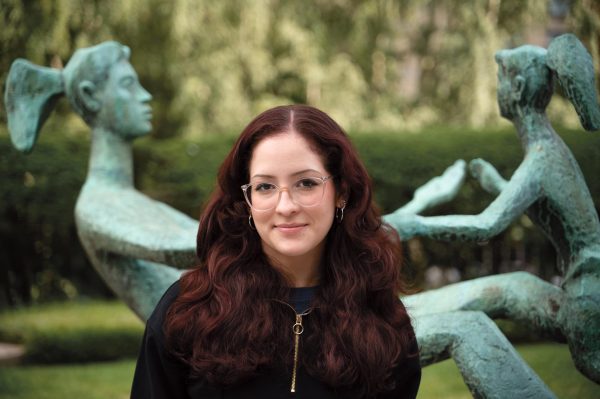Litter in New York City Parks Continues to Grow
Community members voice their concerns about trash levels in NYC’s parks and urban spaces
Litter in the city’s green spaces can cause groundwater contamination and increase the presence of pests.
October 26, 2022
Littering and cleanliness in New York City is an ongoing concern for residents. In parks, waste management extends to the preservation of biodiversity and health benefits of greenery. At the same time that parks in dense, urban areas have experienced a growing trash problem, commitment to the New York City Department of Parks and Recreation’s budget has wavered.
Investment in high-quality green spaces supports public health by encouraging increased physical activity and connection with nature. Parks also mitigate environmental pollution, especially in urban areas such as New York City.
Amelia Medved, Fordham College at Rose Hill ’23 and president of Fordham’s Students for Environmental Awareness and Justice Club (SEAJ), explained that the presence of parks in cities alone has a significant impact on how people think about how their neighborhood looks and feels.
“It has an impact on people’s outlooks and the fabric of their daily lives,” Medved said.
Littering poses a significant concern for public and environmental health, and waste is a sanitation hazard. Litter in the city’s green spaces can result in groundwater contamination, an increase in pests such as rodents that can spread diseases, and exposure to toxic chemicals. Although the city prohibits littering in public parks, it remains a worry for residents.
This year, the New York City Council approved increases to the Department of Parks and Recreation operating budget this year, after a $84 million cut made during the COVID-19 pandemic undermined waste management across the city’s green spaces.
New York City Mayor Eric Adams campaigned on the commitment to allocate 1% of the city’s $100 billion overall budget to the Department of Parks and Recreation. The city council’s vote on the 2023 budget approved only about half of a percent to the department.
As an environmental science major, Medved noted that physical appearance and public health, in addition to maintenance, and upkeep of parks, is also important for local species of animals and biodiversity.
“When you build out the parks in the city, you are making connections available for animals and plant species as well and making sure that there’s enough native biodiversity,” Medved said.
In previous years, SEAJ has visited green spaces to engage with park conservatory and clean ups in conjunction with organizations such as RIPA (Randall Island’s Park Alliance).
Within Campus Ministry, Pedro Arrupe volunteers also engage with park restoration efforts in partnership with Bronx is Blooming, a non-profit focused on “environmental stewardship, community building, and youth leadership development.”
Gibney associated environmental racism with budgetary and service cuts to green spaces that “bring vibrancy to communities.”
Carol Gibney, director of the Office of Campus Ministry Solidarity and Leadership, explained that many of the volunteers are motivated by the university’s Jesuit Catholic traditions and multifaith approach.
“All of our traditions invite us to be good stewards of our land that God has created,” Gibney said. “It’s not an option. It’s part of who we are as humans to be good stewards of the land, and we haven’t been doing such a good job.”
She added that the park clean-ups are part of “caring for our common home.” Gibney cited that in boroughs like the Bronx, it is important to also invest in parks and green spaces in neighborhoods that are neglected. Gibney associated environmental racism with budgetary and service cuts to green spaces that “bring vibrancy to communities.”
Medved also advocated for securing more funding for parks and noted that “political” will is a necessary part of doing so. She pointed to funding disparities between average small neighborhood green spaces and large parks like Central Park in affluent neighborhoods.
Despite city campaigns to engage the public in decreasing litter and waste, green spaces and parks in poorer neighborhoods are still struggling with park maintenance.
“It’s not that people in wealthier neighborhoods treat their spaces better,” Medved said. “It’s that they have charitable donations funding those parks, and then the parks department does not service any of the parks sufficiently.”
According to a report by the New York Restoration Project, not-for-profit organizations and conservancies have been an important source of revenue for the maintenance of parks due to the insufficiency of public investment in the last three decades.
An example of investment in maintaining cleanliness in green spaces is The Central Park Conservancy, which raises nearly $74 million annually, authorized an overhaul of waste management and long-term restoration efforts.
Despite city campaigns to engage the public in decreasing litter and waste, green spaces and parks in poorer neighborhoods are still struggling with park maintenance.














